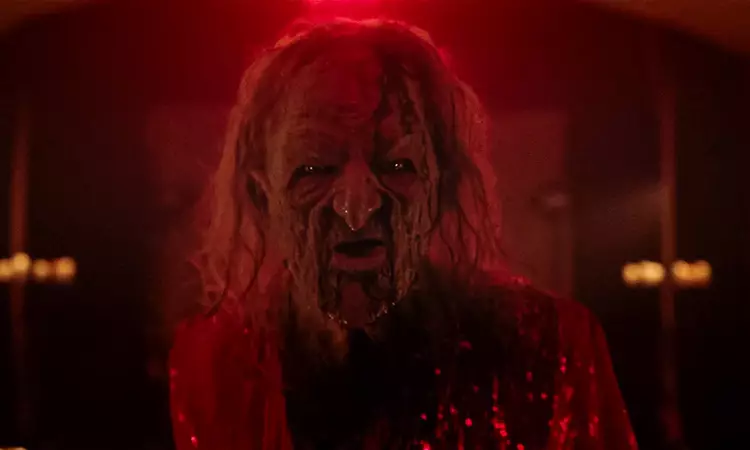“Members Club” cleverly intertwines elements of horror and comedy, delivering a unique commentary on masculinity, sexuality, and the passage of time. The film opens with a chilling scene that immediately sets the tone—middle-aged Geoff, played by David Schall, gives in to base impulses despite a clear warning sign prohibiting such behavior. This absurd contradiction foreshadows the brutal consequences that await him. The narrative quickly escalates from mere shock value to a deeper critique of societal norms, especially concerning gender dynamics and the challenges faced by aging men striving to reclaim their past glory.
The film’s horror aspect is both shocking and absurd, illustrating how those who break societal rules are met with extreme punishment. Geoff’s gruesome fate serves merely as a gruesome prologue, drawing audiences into a farcical labyrinth of male vulnerability. This harsh narrative twist not only provides comic relief but also sets the stage for exploring the broader theme of emasculation. Through Geoff’s experience, the film implies a critique of the nitty-gritty realities of modern masculinity, especially as viewed through the lens of performance and societal expectations.
The character of Alan, portrayed by Dean Kilbey, represents the failed male archetype resonating deeply in today’s culture. He is a has-been, attempting to resurrect his identity through a group reunion of aging strippers known as Wet Dreams. This quartet—composed of Neil, Ratboy, and Carly—embodies the loss of youthful exuberance, becoming increasingly desperate to regain relevance in an unforgiving world. Their evolution into grotesque caricatures of their once-glamorous selves provides both humor and horror, forcing the audience to confront uncomfortable truths about aging and male identity.
“Members Club” introduces the figure of Christine (Emma Stannard)—the unseen conductor of the supernatural chaos that unfolds. The film hints at the long-standing narrative of women opposing patriarchal structures through witchcraft, but with a twist. While Agnes Whitewood is depicted as a menacing witch, her resurrection requires the literal and metaphorical emasculation of the male characters, who, despite their past bravado, are ultimately weak and fearful. The subversion lies in allowing these formerly dominant figures to become the subjects of ridicule. Agnes’s return marks a violent upheaval of the established order, compelling men like Alan to confront their failings, not just towards the women in their lives but towards their own self-image.
Christine’s backstory, which hints at her own struggles with a patriarchal society, serves as a driving force for the narrative. In wielding her powers, she transforms the setting from celebratory ennui to unabashed chaos, creating a rebellious aesthetic that both frightens and entertains. The eventual confrontations prompt Alan to reassess his relationship with his estranged daughter, Daisy, also emphasizing the generational effects of masculinity.
Writer/director Marc Coleman masterfully navigates the precarious balance between horror and comedy in “Members Club.” Drawing comparisons to films like “The Full Monty” and “Double Date,” the narrative skillfully employs incongruity at every turn—whether through eccentric cameos, crude humor, or unexpected twists. Such elements combine to form a surreal tapestry that continually challenges the viewer’s expectations while providing insight into the absurdity of the male experience.
The film’s bizarre comedic moments, such as the prosthetic ‘double dong’ and a talking cheese and pineapple hedgehog, serve to underscore its critiques of masculinity and the grotesque extremes performers might go to uphold their status. This tonal mash-up not only keeps the audience engaged but also reflects a world where performance surpasses reality, drawing horrific parallels to the superficiality of societal standards for men and women alike.
In the final moments of “Members Club,” Alan encounters a jarring transition from comedic ineptitude to a violent confrontation with his own masculinity. This shift encapsulates the essence of the film, illustrating how far removed contemporary manhood is from its former ideals. As Alan grapples with his identity, he embodies the multitude of struggles faced by men today, ultimately confronting the question of what masculinity truly means in an ever-evolving societal landscape. “Members Club” thus emerges as both a scathingly funny and haunting exploration of the absurdity of male identity in the face of imminent change, prompting necessary discussions about agency, desire, and the uncontrollable forces of the past.


Leave a Reply